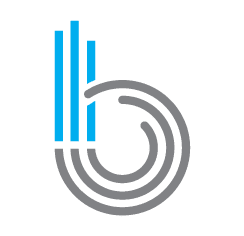The term inbound marketing is not a new method, but it is a method that still confuses many businesses. Inbound marketing methods focus on content creation (e.g., blogging) as a way to attract your target audience and establish your business as a resource within your industry. In turn, regular blogging serves to boost search engine rankings, drive media interest, and provides points of engagement on social media.
Inbound marketing is a pull method, rather than the push method of traditional advertising, and it all comes down to one very important strategy: ongoing content creation.
When we talk about content, we are simply talking about information. In this case, content is any form of online information that you provide: blog posts, infographics, photo galleries, interactive maps, social media messages, aggregated articles, etc. The most important thing about content is that when it is done right, it does not focus on you; it focuses on your customers.
Blogging for Business
Great content delivers to your buyer persona the exact information they need, when and where they need it. One of the best ways to accomplish this is with a blog. Let’s take a look at a few important statistics:
- Websites with a blog often have 434 percent more indexed pages.
- B2B marketers with blogs receive 67 percent more leads than those who do not.
- Marketers who blog regularly are 13 times more likely to achieve a positive ROI.
- Blogs are rated the fifth most trusted source for accurate online information.
While 53 percent of marketers claim blogging is their top priority when it comes to content marketing, that also means 47 percent likely do not consistently blog. Considering the bullet points listed above, this 47 percent is missing out on a significant opportunity.
Telling a Brand Story
Blogging is no longer a novelty marketing tactic. Rather, blogging has become essential to businesses in the digital age. As the journalistic landscape continues to evolve, more and more traditional writers and editors are filling demand on the creative side.
Businesses need more than just “a writer;” they need an editorial vision. They need someone who knows how to tell a brand story and then translate that story to several platforms. Journalism provides an excellent skill set for storytelling, which is why content creation within agencies and businesses is now more of a journalistic process.
Creating Content That Converts
To truly engage your audience, you need to know how to write a blog that speaks to them. Thinking in terms of inbound campaigns is a great way to optimize your digital marketing content to maximize conversion.
When forming a campaign, you should focus either on a single persona and pain point, or two personas who may share a pain point. Understanding the persona you are targeting, the issue you are seeking to solve, and the goals of the campaign are all important to lead generation.
Another factor in campaigns is considering the buyer’s journey. Always write content for each stage of the journey, rather than just focusing on sales. Focus on these three stages: Awareness (recognizing a problem or need), Consideration (discovering solutions to the problem or need), and Decision (choosing the solution for the problem or need) is key to building a cache of content that can speak to your persona across different levels and convert appropriately.
Adopting a Persona-Driven Strategy
While it can be tempting for any business to want to present the maximum information that speaks to their services and reflects the positive aspects of their business, the best methodology is to hold off. Content is the core of how we are perceived online. Creating content that converts is the key to lead generation. By following a persona-driven content strategy, those leads can become a reality.

